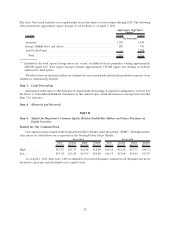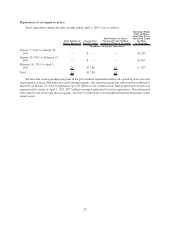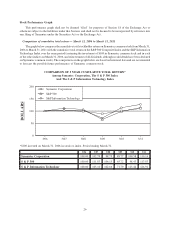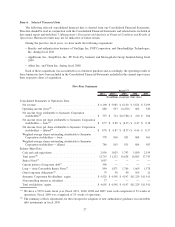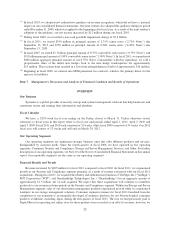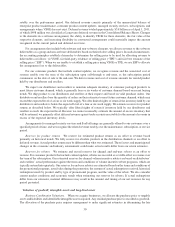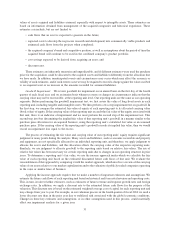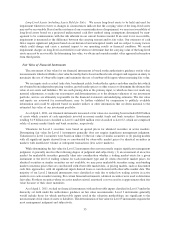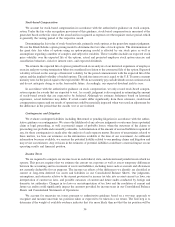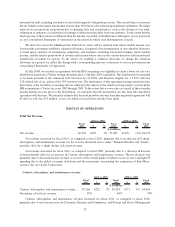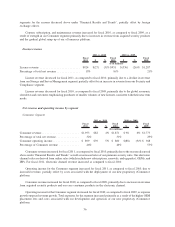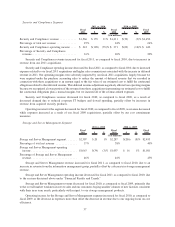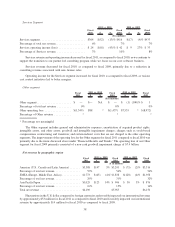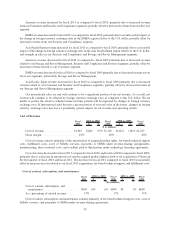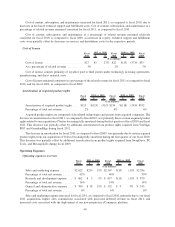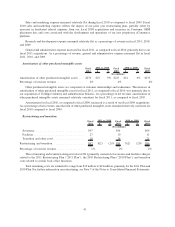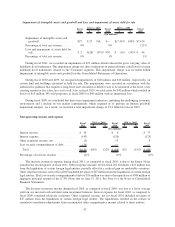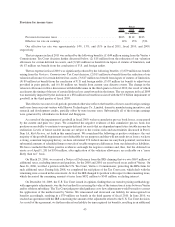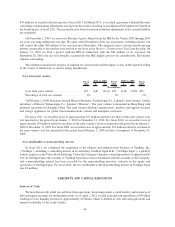Symantec 2011 Annual Report Download - page 104
Download and view the complete annual report
Please find page 104 of the 2011 Symantec annual report below. You can navigate through the pages in the report by either clicking on the pages listed below, or by using the keyword search tool below to find specific information within the annual report.Stock-based Compensation
We account for stock-based compensation in accordance with the authoritative guidance on stock compen-
sation. Under the fair value recognition provisions of this guidance, stock-based compensation is measured at the
grant date based on the fair value of the award and is recognized as expense over the requisite service period, which
is generally the vesting period of the respective award.
Determining the fair value of stock-based awards, primarily stock options, at the grant date requires judgment.
We use the Black-Scholes option-pricing model to determine the fair value of stock options. The determination of
the grant date fair value of options using an option-pricing model is affected by our stock price as well as
assumptions regarding a number of complex and subjective variables. These variables include our expected stock
price volatility over the expected life of the options, actual and projected employee stock option exercise and
cancellation behaviors, risk-free interest rates, and expected dividends.
We estimate the expected life of options granted based on an analysis of our historical experience of employee
exercise and post-vesting termination behavior considered in relation to the contractual life of the option. Expected
volatility is based on the average of historical volatility for the period commensurate with the expected life of the
option and the implied volatility of traded options. The risk free interest rate is equal to the U.S. Treasury constant
maturity rates for the period equal to the expected life. We do not currently pay cash dividends on our common stock
and do not anticipate doing so in the foreseeable future. Accordingly, our expected dividend yield is zero.
In accordance with the authoritative guidance on stock compensation, we only record stock-based compen-
sation expense for awards that are expected to vest. As a result, judgment is also required in estimating the amount
of stock-based awards that are expected to be forfeited. Although we estimate forfeitures based on historical
experience, actual forfeitures may differ. If actual results differ significantly from these estimates, stock-based
compensation expense and our results of operations could be materially impacted when we record an adjustment for
the difference in the period that the awards vest or are forfeited.
Contingencies and Litigation
We evaluate contingent liabilities including threatened or pending litigation in accordance with the author-
itative guidance on contingencies. We assess the likelihood of any adverse judgments or outcomes from a potential
claim or legal proceeding, as well as potential ranges of probable losses, when the outcomes of the claims or
proceedings are probable and reasonably estimable. A determination of the amount of accrued liabilities required, if
any, for these contingencies is made after the analysis of each separate matter. Because of uncertainties related to
these matters, we base our estimates on the information available at the time of our assessment. As additional
information becomes available, we reassess the potential liability related to our pending claims and litigation and
may revise our estimates. Any revisions in the estimates of potential liabilities could have a material impact on our
operating results and financial position.
Income Taxes
We are required to compute our income taxes in each federal, state, and international jurisdiction in which we
operate. This process requires that we estimate the current tax exposure as well as assess temporary differences
between the accounting and tax treatment of assets and liabilities, including items such as accruals and allowances
not currently deductible for tax purposes. The income tax effects of the differences we identify are classified as
current or long-term deferred tax assets and liabilities in our Consolidated Balance Sheets. Our judgments,
assumptions, and estimates relative to the current provision for income tax take into account current tax laws, our
interpretation of current tax laws, and possible outcomes of current and future audits conducted by foreign and
domestic tax authorities. Changes in tax laws or our interpretation of tax laws and the resolution of current and
future tax audits could significantly impact the amounts provided for income taxes in our Consolidated Balance
Sheets and Consolidated Statements of Operations.
We account for uncertain tax issues pursuant to authoritative guidance based on a two-step approach to
recognize and measure uncertain tax positions taken or expected to be taken in a tax return. The first step is to
determine if the weight of available evidence indicates that it is more likely than not that the tax position will be
34


